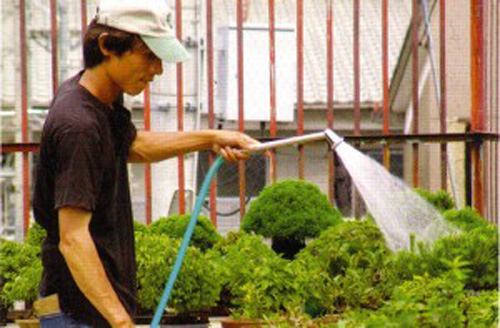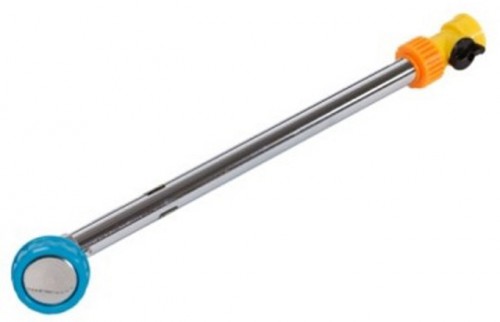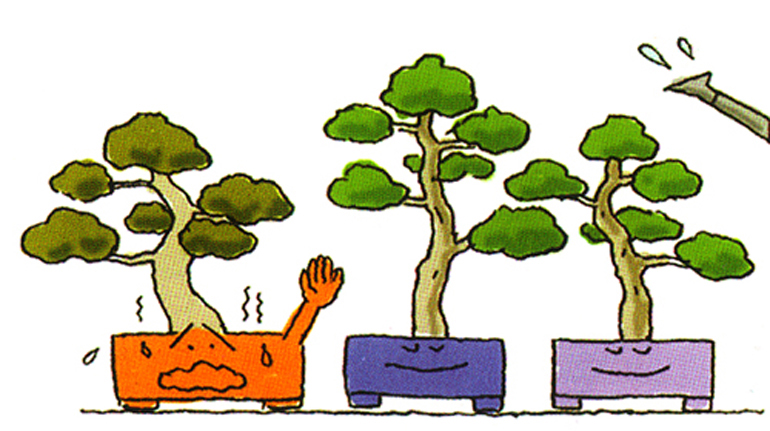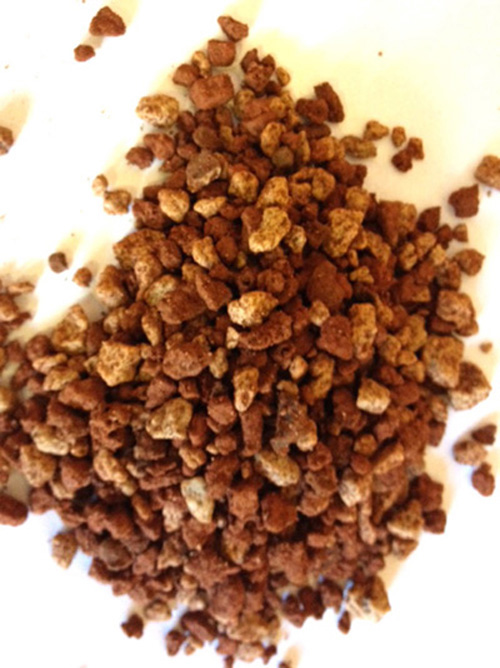This drawing is from our Masters' Series book; Junipers, Growing & Styling Juniper Bonsai (due back in print in November, 2015).
This will be the fourth time we’ve featured this post, but it’s summer now so the time is right.
The more you know about watering, the better.
Without timely, intelligent watering, any plant in a container is at risk. The more you know about watering, the better. BTW: A perfect complement to this post is a post about summer misting (hamisu) by Michael Hagedorn.

Photo from Shohin Bonsai by Morten Albek.

A good watering wand is a must. Especially if you have lots of trees to water.
A good watering can is a valuable tool if you grow indoor bonsai and very useful if you only have a handful of outdoor trees.
Over the course of my thirty plus years working with bonsai the thing that most amazes me is how little some people know about watering (it has gotten better over the years, but still…). Brown thumbs abound.
One of the traits that people in the brown thumbed tribe share is a desire for easy answers. Don’t confuse me with valuable information, just tell me what to do. Or, in other words “how often do I water?” If this is your question, perhaps the best answer is: “how often do you drink a glass of water?”
Just a little plant science can go a long ways
Plants absorb most of their water and nutrients when the water content of the soil is around 20% to 50% of the available space. Available space is the space in the pot that is not taken up by solid matter. In other words, it is the space that can accommodate water and/or air. This space is found between soil particles and in pockets, holes and cracks within soil particles.
Skip this paragraph if you are easily confused:
Some sources use a percentage of total volume; if the soil takes 50% of the total volume and available space takes 50% (a pretty good ratio for bonsai soil), then you would say optimal water content is 10% to 25% percent of the total volume. This is the same as saying 20% to 50% of the available space.
If you water thoroughly, all the air is driven out of the available space. At that point the water content is 100% of the available space. If your soil drains properly, excess water will run out and the available space will contain a mixture of water and air.
Ideally, you want this mixture of water and air to quickly reach around 50% water and then slowly dry down to about 20% water. In other words, you want soil with excellent drainage and with good water retention at the optimal levels.
So, how often do you water?
How long soil holds water at optimal levels depends upon all kinds of things: your soil mix, size and type of pot, sun, heat, wind, temperature, time of year and health of the plant, to name a few. This goes back to the questions “how often do I water?” and “how often do you drink a glass of water?” You water when needed (when the soil is almost dry) and you drink when you’re thirsty.
Beware direct sun combined with wind
Just a heads up. Nothing dries soil faster than hot sun and wind. Especially together.

Trees don't necessarily dry down at the same rate. Skip the ones that are still wet and water the ones that are dry or almost dry.
Soak thoroughly when you water
In order to dispel all the old stale air and to assure the soil is thoroughly watered, make sure you soak the soil when you water.
Then wait until it’s almost dry to water again
To assure that the water/air mixture goes through the optimal range for water and nutrient retention, wait until the soil is almost dry before you water again (there are occasional exceptions, but that’s for another time).
Soil is key
So, for the two of you who have read this far, it should be clear that good soil is one of the keys to bonsai health. Without complicating matters by going into the numerous soils on the market, if the soil you are using doesn’t allow for good drainage while providing some water retention at optimal levels, then it’s time to try a better soil (you might consider our Masters Bonsai Soil).

In South Florida we’re finding that we can plant in straight lava rock (Colorado Red Lava, 1/4″ size.)
May not be optimum but you get great aeration and you can fill a very large container for about $10.00.